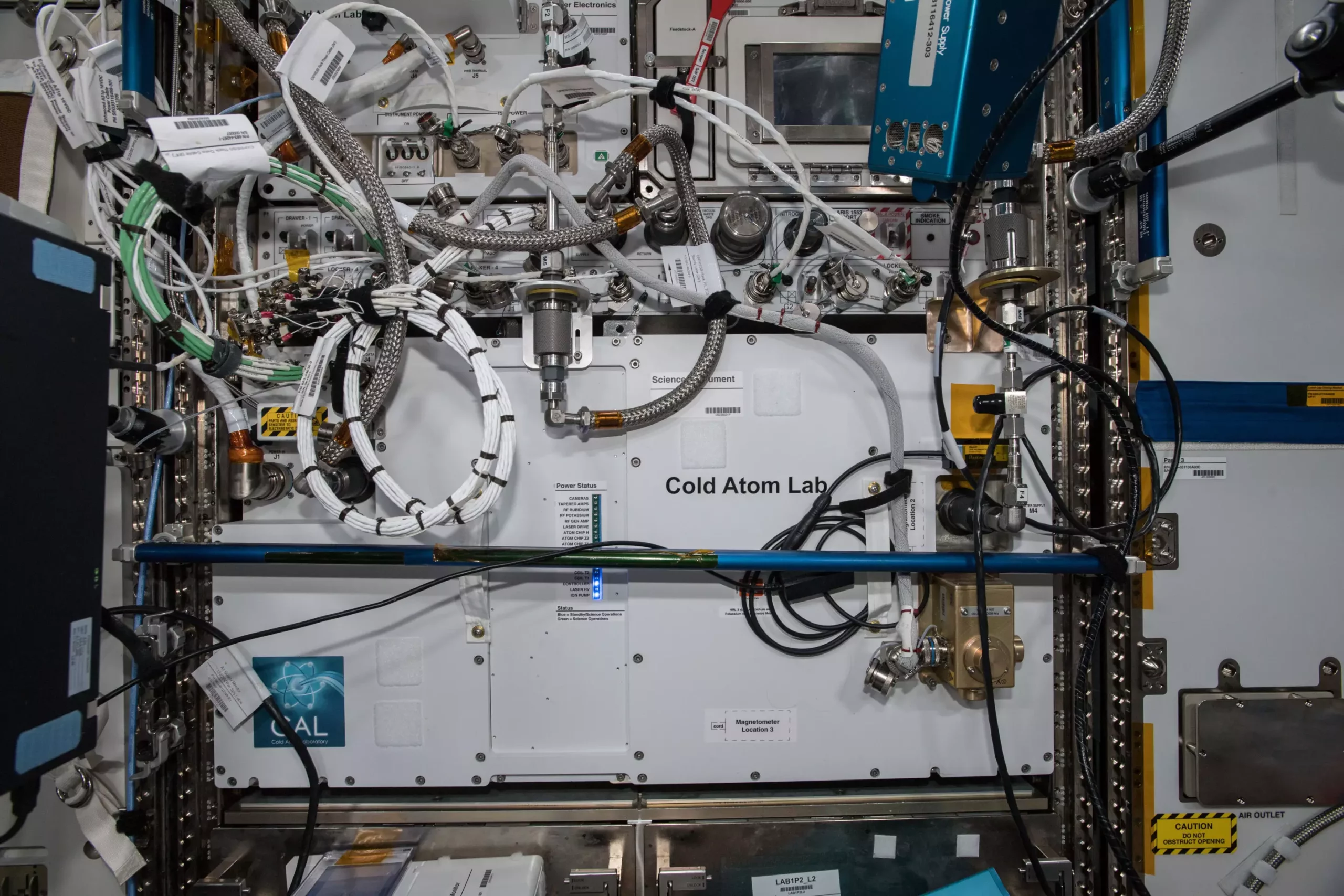NASA’s Cold Atom Lab, located on the International Space Station, has made significant advancements in the field of quantum science by utilizing ultra-cold atoms to measure subtle vibrations in the space station. This groundbreaking research, detailed in a recent publication in Nature Communications, marks a significant milestone in the study of quantum mechanics in outer space.
Physicists have long been interested in applying atom interferometry in space due to the microgravity environment, allowing for longer measurement times and increased instrument sensitivity. This technology, typically considered delicate and requiring constant monitoring on Earth, has proven to be functional and reliable when operated remotely from a space station. The Cold Atom Lab has demonstrated the feasibility of conducting complex measurements in space without physical intervention, showcasing the potential for future advancements in quantum research.
The ability to measure gravity with high precision using space-based sensors opens up a wide range of applications, from exploring the composition of planets and moons in our solar system to understanding dark matter and dark energy, two significant cosmological mysteries. By leveraging atom interferometry, researchers can obtain detailed insights into gravitational variations and surface mass changes, contributing to our understanding of the universe’s fundamental structure.
The Cold Atom Lab, roughly the size of a minifridge, was launched to the space station in 2018 with the specific goal of advancing quantum science in a microgravity environment. By cooling atoms to almost absolute zero, the lab creates Bose-Einstein condensates, unique states of matter that exhibit macroscopic quantum properties. Through the use of tools like the atom interferometer, scientists can delve into the intricate behaviors of atoms at the quantum level, shedding light on the mysteries of quantum mechanics and the nature of the universe.
Researchers involved in the Cold Atom Lab project envision a future where space-based atom interferometry leads to groundbreaking discoveries and the development of innovative quantum technologies. By harnessing the wave-like behavior of atoms and exploring the uncharted territory of quantum physics, scientists aim to unravel the complexities of general relativity, dark matter, and dark energy. The insights gained from these experiments may pave the way for a new era of quantum exploration and technological advancement.
The Cold Atom Lab represents a pioneering endeavor in the field of quantum science, demonstrating the immense potential of conducting experiments in space to unlock the secrets of the universe. As researchers continue to push the boundaries of quantum technology and explore the frontiers of atomic physics, we can anticipate a future where the Cold Atom Lab and similar initiatives revolutionize our understanding of the cosmos and propel us into a quantum future.


Leave a Reply